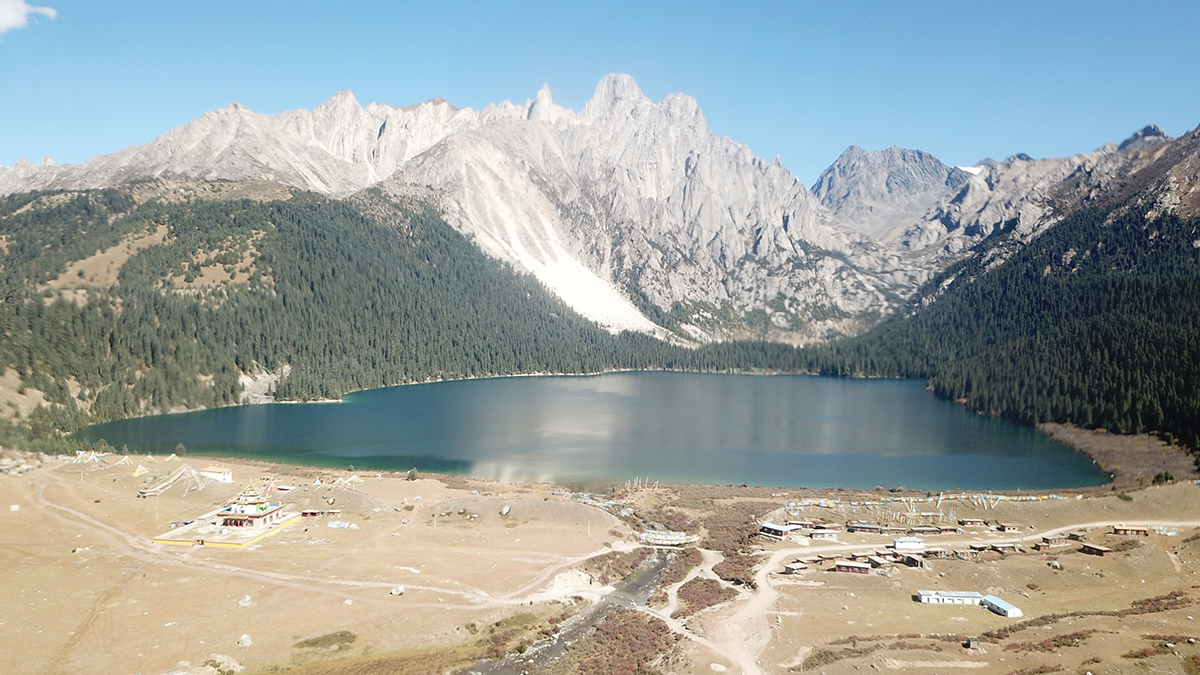Source: Journal of Geophysical Research: Biogeosciences
When an earthquake causes a landslide, debris flow, or erosion, it can change the makeup of nearby lakes by introducing larger sediment particles, causing faster sediment buildup, and affecting carbon sequestration. The sediments that build up on lake bottoms act as a historical archive, recording the lake’s biological, physical, and chemical changes and how they affect microbes such as diatoms (microscopic glass-like algae). Yet little is known about how sudden, earthquake-driven disturbances may affect lake ecosystems.
Xue et al. looked at the long-term changes in Lake Cuopu (Lake Tsopu) in the Himalayas. The 200-kilometer radius around the lake experienced 63 earthquakes greater than magnitude 5 between 1900 and 2017. The lake’s high altitude, alpine climate, and low human activity made it an ideal site to examine the microbial and geochemical changes caused by these earthquakes.
In 2017, researchers took a 45-centimeter-long sediment core from the center of Lake Cuopu, where the water was 14 meters deep. They then divided the core into 41 one-centimeter samples for analysis. Researchers identified the markers of two large earthquakes (magnitudes 7.09 and 7) that occurred between 1900 and 1923. One marker was an increase in sand content at a depth of 28 to 35 centimeters, and another was an increase in median grain size at deeper levels (28 to 35 centimeters) compared to shallower ones (1 to 23 centimeters.)
The researchers divided the sediment core into two time periods, with stage 1 encompassing the earthquakes (1886–1917) and stage 2 including the decades after the quakes (1923–2017). They noted a sharp decrease in diatom populations after the earthquakes, likely because of the increase in sediment and nitrogen. During stage 1, the diversity of diatoms temporarily increased, perhaps because of the lateral transport of sediment, before decreasing in stage 2. In addition, bottom-dwelling species declined after the earthquakes, whereas floating species proliferated.
On the basis of the findings from Lake Cuopu, the researchers estimate that about 15,000 lakes—or about 1.1% of lakes and 1.7% of lake area around the globe—have undergone similarly dramatic shifts after large earthquakes, altering the ecosystem balances both below the water’s surface and in surrounding landscapes. (Journal of Geophysical Research: Biogeosciences, https://doi.org/10.1029/2024JG008723, 2025)
—Rebecca Owen (@beccapox.bsky.social), Science Writer
